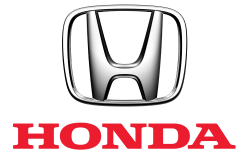The Middle East & Africa automotive glass fiber composites market size is anticipated to expand at a significant CAGR during the forecast period, 2021-2028. The growth of the market is attributed to increasing demand for durable and lightweight materials for automotive production.

Glass fiber is a reinforced plastic, also known as fibreglass. Fibreglass is widely used in automotive industry due to its tensile strength, flex modulus, creep resistance, impact resistance, heat, chemical resistance, temperature resistance and dimensional stability. The glass fiber is usually flattened into a sheet, randomly arranged or woven into a fabric. They can be made of different types of glasses such as A-glass, C-glass, E-glass, AE-glass, and S-glass. Polyester is mostly used while making the fibreglass car bodies.
Market Trends, Drivers, Restraints and Opportunities
- Increasing use of fiberglass composites in the automotive industry is projected to drive the market growth during the forecast period.
- Rising extensive use of fiber glass in the construction & infrastructure industry is expected to boost the market growth in the coming years.
- Growing urbanization is expected to spur the market growth during the forecast period.
- High processing and manufacturing cost of composites can restrain the growth of the market.
- Recycling issues of glass wool is estimated to restrict the market growth in the coming years.
- The presence of alternatives such as carbon fiber can restrain the growth of the market.
- Capital-intensive production and complex manufacturing process of fibreglass are some challenges of the market.
- Increasing number of wind energy capacity installations is one of the key opportunities of the market during the forecast period.
- The demand for renewable energy in the form of wind turbines can create lucrative opportunities during the forecast period.
Scope of the Report
The report on the Middle East& Africa automotive glass fiber composites market includes an assessment of the market, trends, segments, and regional markets. Overview and dynamics have also been included in the report.
|
Attributes
|
Details
|
|
Report Title
|
Automotive Glass Fiber Composites Market - Middle East & Africa Industry Analysis, Growth, Share, Size, Trends, and Forecast
|
|
Base Year
|
2020
|
|
Historic Data
|
2018–2019
|
|
Forecast Period
|
2021–2028
|
|
Segmentation
|
Production Types (Hand Layup, Resin Transfer Molding, Vacuum Infusion Processing, Injection Molding, and Compression Molding), and Application Types (Structural Assembly, Power Train Component, Interior, Exterior, and Others)
|
|
Geography
|
Egypt, Iran, Iraq, Israel, Morocco, Qatar, Saudi Arabia, Ethiopia, The UAE, and Yemen
|
|
Report Coverage
|
Company Share, Market Analysis and Size, Competitive Landscape, Growth Factors, and Trends, and Revenue Forecast
|
|
Key Players Covered in the Report
|
Solvay Group; 3B (Braj Binani Group); Owens Corning; Veplas Group; and SAERTEX GmbH & Co.KG
|
Middle East & Africa Automotive Glass Fiber Composites Market Segment Insights
Resin transfer molding segment to hold a significant market share
Based on production types, the market is divided into hand layup, resin transfer molding, vacuum infusion processing, injection molding, and compression molding. The hand layup segment is anticipated to hold a key share of the market in the coming years due to ability to exploit the full strength of the fiber based composite, since the full length of the fiber can be utilized effective for composite structures, andlittle upfront investment beyond materials and basic tools. However, the resin transfer molding segment is anticipated to expand at a rapid pace during the forecast period owing to improved materials processing techniques potentially yield better interface, which leads to better composite performance and durability.

Interior segment to hold a significant market share
On the basis of application types, the market is segregated into structural assembly, powertrain component, interior, exterior, and others. The exterior assembly segment is anticipated to hold a key share of the market in the coming years due to compressive, non-flammable, high humidity resistance of glass fibers. However, the interior segment is anticipated to expand at a rapid pace during the forecast period owing to low moisture absorption and, electrical insulation application.
Morocco is estimated to account a major market share
In terms of geography, the market is classified as Egypt, Iran, Iraq, Israel, Morocco, Qatar, Saudi Arabia, Ethiopia, The UAE, and Yemen. Ethiopia is expected to constitute a key share of the market during the projected period due to high import duties and limited supply of vehicles, pushing for newer automotive and EPS manufacturing factories. However, the market in Morocco segment is anticipated to expand at a rapid pace during the forecast period owing to the country’s developed investment cluster program, which resulted the entrance of automotive company, Renault in the market.
Segments
Segments Covered in the Report
The Middle East & Africa automotive glass fiber composites market has been segmented on the basis of
Production Types
- Hand Layup
- Resin Transfer Molding
- Vacuum Infusion Processing
- Injection Molding
- Compression Molding
Application Types
- Structural Assembly
- Powertrain Component
- Interior
- Exterior
Geography
- Egypt
- Iran
- Iraq
- Israel
- Kuwait
- Morocco
- Oman
- Qatar
- Saudi Arabia
- Ethiopia
- The UAE
- Yemen
Key Players
- Solvay Group
- 3B (Braj Binani Group)
- Owens Corning
- Veplas Group
- SAERTEX GmbH & Co.KG
Competitive Landscape
Key players competing in the Middle East & Africa automotive glass fiber composites market includes Solvay Group; 3B (Braj Binani Group); Owens Corning; Veplas Group; and SAERTEX GmbH & Co.KG
Some of these players are engaging in business strategies such as mergers, acquisitions, partnerships, collaborations, capacity expansion, and product launches to enhance their market share.

























